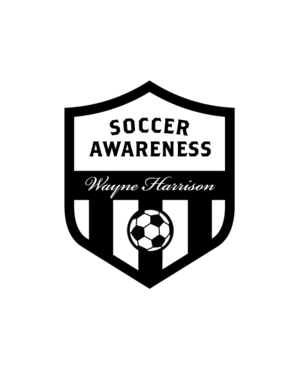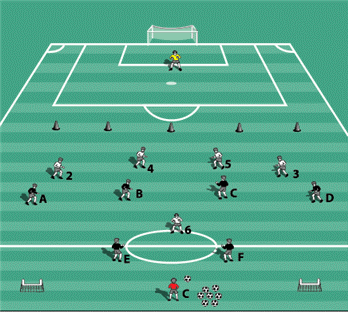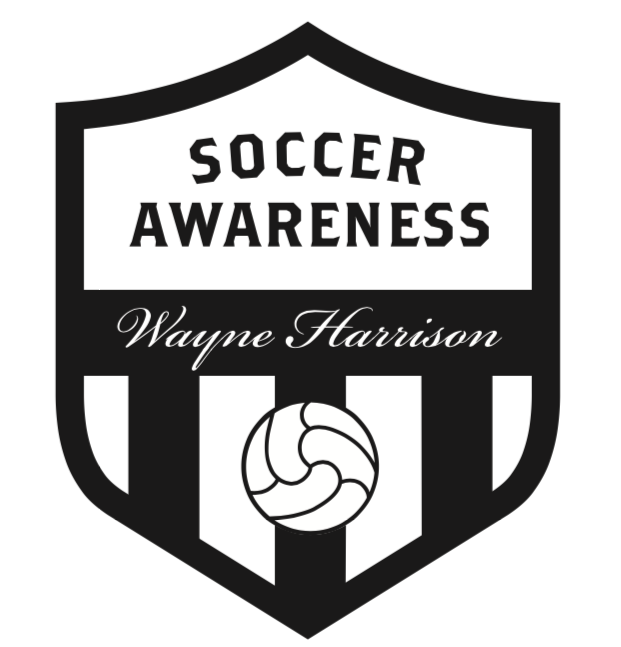Italian Pressing and Conditioning Play Part 3: Identifying When and Where to Drop; Hold the Line, Slide; Press the Ball and Push or Sprint Up
/This is part 3 of a four part series on Italian Pressing and Conditioning Play.
Get Part 1: Pressing from the Back and Condensing Play
Get Part 2: Pressing with a Back Four and Defensive Midfielder
Identifying When and Where to Drop; Hold the Line, Slide; Press the Ball and Push or Sprint Up
- Using the Calls UP, OUT, HOLD, DROP, SLIDE RIGHT, and SLIDE LEFT. These are quite self explanatory but UP means edging up a few yards, then reassessing the situation; OUT means sprinting out, potentially many yards.
- This is set up to practice when to drop, when to hold the line and where to press up as a unit.
- Start with an overload of defenders to give you a better chance of success.
- A line of cones are placed where the back four should try not to drop behind.
- Dropping, holding the line or even pressing up (pressing even when you haven’t the ball) can depend on the following:
Dropping Off (using the DROP call)
- Opponents have the ball, and they make deep penetrating running in front of the ball; and there is no pressure or very poor pressure on the ball. At this moment the back four should drop off as the player on the ball has the freedom to pass the ball forward and can read the timing of when and where to do it due to this; and based on the back four’s position. This is unless the back four are so together and in tune they can push up the moment before the ball is delivered; but this can be a very risky decision.
Holding the Line or Pressing up (Using the HOLD; UP or OUT one word commands)
- Opponents have the ball, If the attackers make deep penetrating runs and there is very good pressure on the ball in front of the back four by another team mate, thus preventing a forward pass; at this moment they should hold the line and let the attackers run offside, or even press up as a unit to make it even more obvious their opponents have run offside.
- Opponents have the ball, If there is; very poor pressure or no pressure on the ball; but also no penetrating forward runs by opponent’s designed to get in behind the back four, then the back four can hold the line or even press up slightly.
- If the opponents have the ball and the player on the ball is facing forward, but has his or her head down looking at the ball, and is not observing what is ahead, nor any runs made by team mates, and there even is poor or no pressure on the ball; then that is a time to hold the line or step up too. The player looking down at the ball is the CUE to the back four to HOLD or step UP.
- Opponents have the ball: If there is very good pressure on the ball and the ball cannot be passed forward; and the opponents do not make penetrating forward runs beyond the back four, then the back four can actually press up even though we do not have possession of the ball.
- When Opponents have the ball, this is emphasized even more if the opponents are forced to pass the ball backwards, and cannot immediately play it forward again (due to good pressure). Distances we can push up depends on the distance of the ball from the back four and the immediate pressure on the next player receiving the back pass; it can be a substantial step up from the back and may result in opponent’s strikers being left offside as a by - product. This is turn pushes our midfield on and further presses the ball if it in the midfield area.
- We have the ball. When we win possession and play the ball forward and maintain possession that is a cue to push up quickly and immediately.
- If there is ANY DOUBT in any given situation then the back four should ALWAYS DROP DEEPER to be on the safe side, as that is the easiest decision to make.
Hi Coach,
We are excited to provide you with one of our popular soccer coaching ebooks today...
In this Soccer Coaching Ebook you will Learn The SECRETS To Coaching Decision Making And Awareness From Pro Academy Coach Wayne Harrison!
Learn the "Look and Think" Model Of Player Development which will get ever player on your team to think and act several steps ahead of play and think fast!
Click here to download the popular Coaching Soccer Awareness E-Book FREE!
Phase Play Set Up
Add players to the practice. Have the game set up as a normal phase play, attackers against defenders. Attackers have to try to score, defenders try to win the ball back and score in the little goals. The defenders have five passes to score once they win the ball then it goes back to the attacking side.
Use the stepping up method of defending where appropriate, it will not be on every time to use it. The cones act as a guide but defenders can use this method of defending higher up the field in their own half.
Coaching Points:
- Is there Pressure on the ball or not?
- The Timing of when to drop, when to hold the line and when to step up, individually and collectively depending on the situation
- Regaining possession or opponents caught offside
A sign they are being successful from this is when the back four ends high up the field, away from the cones even though their opponents still have the ball.
Develop The Phase Play
- Overload the attacking team to make it more difficult for the defending team.
- Here we have an 8 v 6.
- Using the one word commands and identifying the moments to implement each one with the team.
- The coach can start each attack off with a pass.
- The coach can also be a target for the defenders should they win the ball as well as the side goals. Each represents a front player on their team that they have to pass to, thus when they get it to the goals or the coach they push up quickly using the OUT word.



















